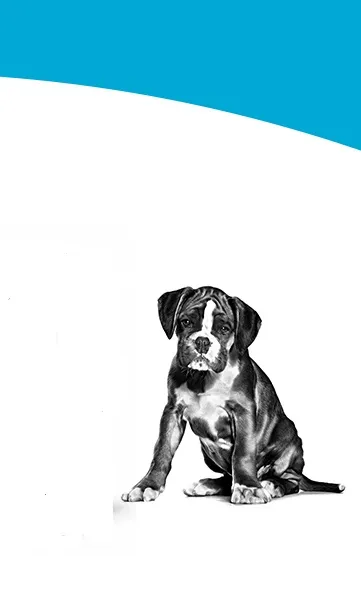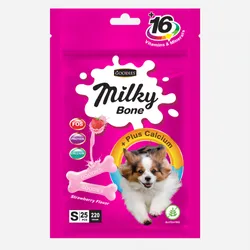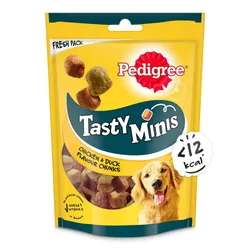Boxer
High-spirited and happy, Boxers are a breed who just adore their family with all their heart. They have a surprisingly sweet nature and a child-like sense of humour despite being a guard dog, which makes them ideal companion pets.
Average sizes and life expectancy of the breed
25-32 cm
25-32 kg
10-12 years
Germany
pure
working
Characteristics of the Boxer
Boxers are happy, charismatic and an energetic dog breed who were known for their great work ethic in ancient times. They are alert and highly enthusiastic showing great curiosity for every task they do. Boxer dogs love to get affection from both adults as well as children and are also fearless and protective of their families making them great family dogs. Originally, they were bred to play the role of a medium-sized guard dog, but today they excel a lot as companion dogs. These dogs love to play and most of the time, they forget their size becoming clumsy, friendly and super funny.

Coat
Boxers have short, hard and a glossy coat. The space between one hair and another is almost zero, yet the hairs are still exceedingly low in relation to the skin. The most common colours are fawn or tawny and they usually have very discreet stripes along the body, especially on the back. Several colours are accepted by the breed standard, and several of them have a white "glove" on all paws. The best part in owning a Boxer is that these dogs are low-shedders, in comparison to most other dog breeds. But Boxers do shed! You can expect them to shed quit a bit during the springs and hence, their brushing should be done once or twice weekly. Also, be vigilant of parasitic invasion as they can cause irritation and allergies in Boxers. Feed them a diet having Omega fatty acids, as it maintains excellent skin and coat health in them.
Pet Profile
Recommended Treats for Boxer
Jerhigh Dog Treats Banana 70 gms
1

Goodies Dog Treats Milky Bone Calcium Plus Strawberry Small 25 Pcs
2

Jerhigh Dog Treats Cookie 70 gms
3

Pedigree Tasty Minis Cubes Adult Dog Treat, Chicken & Duck Flavour Chunks - 130 gm
4

Best Dog Food For Boxers
In general, a Boxer's diet should be a low-glycemic one and should consist of protein in every meal. Protein helps in building muscle mass and also in repairing the body tissues. Puppies require a protein content of a minimum 22% while adult dogs need a protein content up to a 20%. Avoid feeding them Fillers totally as they can trigger allergic reaction in them. When it comes to Senior Boxers, they maintain high energy throughout their lives. Hence the diet of Senior Boxers should have a decent amount of Proteins and Fats. Also, a diet having balanced proportion of Omega 3 and Omega 6 fatty acids can fortify their skin and joint health. If you are a Boxer owner, you should be particular about your dog's feeding amount as this breed is quite vulnerable to obesity. It would be best if you strictly adhere to the feeding chart given by your veterinarian.
Grooming Your Boxer
As Boxers have a short, tight fitting coat, they don't need much grooming as compared to other dog breeds. But that doesn't mean Boxers do not shed at all. They will shed a bit of hair all around the year, though it may increase in summers. Still, the hair fall can be reduced by regular brushing and combing. Regarding their nutrition, When it comes to combing their hair, a bristle brush with firm bristles is an ideal choice for a short coat like Boxer's. They are perfect for removing loose and dead hair and will leave your Boxer look healthy and shiny. As for bathing, you can bathe these dogs only once in every 3 weeks, since they don't get dirty or smelly as quickly as other long-haired breeds. Regarding nutrition, look for a diet having essential fatty acids, as it will help in keeping their skin and coat healthy as well as shiny,
Taking Care of a Boxer
As Boxers have such a short coat, they can be bothered when the hair comes off the skin, and weekly brushing is ideal for your them. In spring, when the hair changes, brushing should be done at least twice a week. Boxer dogs can have severe skin allergies, so it's always good to watch your four-legged child's ears, paws, ears, snout, and eyes. If they present redness or bad smell, you should consult a veterinarian as soon as possible, so that an apt treatment is indicated.
History of Boxers
It is believed that ancestors of Boxers were war dogs in the Assyrian empire in 2500 BC. However, the existential evidence of the ancestors of modern Boxers can be traced back to the late 18th Century in Germany. It is presumed that the Boxers have been bred down by German dog fanciers from a massive, heavier German breed called the Bullenbeiser, also known as Bull biter. They worked as hunting dogs in pursuit of bear, wild boar and deer. Later, Boxers were introduced to other parts of Europe and the United States in the early 20th Century. During World War 1, the Boxer was co-opted for Military Work, who played the role of a vital messenger, attacker dog and a guard dog. They were also in World War 2, after which they were taken by returning soldiers to home. They were then exposed to a wider audience, following this they became popular.